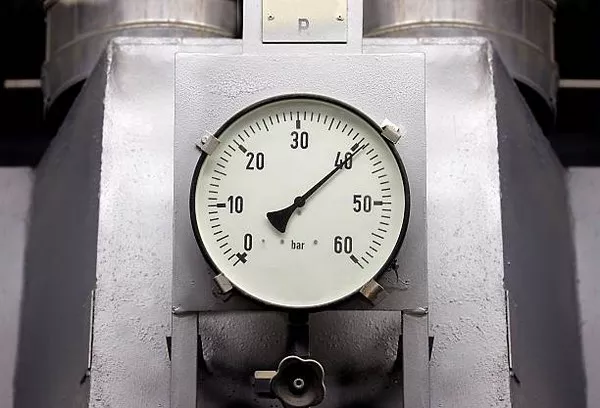Barometers have been essential tools for meteorologists and weather enthusiasts alike, playing a crucial role in predicting weather patterns by measuring atmospheric pressure. With the growing interest in home weather stations, many individuals have incorporated barometers into their setups. But how accurate are these home barometers? In this article, we will delve into the factors affecting the accuracy of home barometers, compare them to professional-grade instruments, and provide tips on how to maximize their precision.
Understanding Barometric Pressure
Barometric pressure, also known as atmospheric pressure, is the force exerted by the weight of the air above a specific point. It is measured in units such as inches of mercury (inHg), millibars (mb), or hectopascals (hPa). Changes in barometric pressure are associated with different weather conditions: falling pressure often indicates stormy weather, while rising pressure suggests fair weather.
Types of Home Barometers
Home barometers come in several forms, including aneroid, digital, and mercury barometers. Each type has its own mechanisms and potential accuracy levels:
Aneroid Barometers: These barometers use a small, flexible metal box called an aneroid cell, which expands and contracts with changes in pressure. This movement is translated into a reading on a dial. Aneroid barometers are popular for home use due to their durability and ease of maintenance.
Digital Barometers: These devices use electronic sensors to measure atmospheric pressure and often come as part of a multi-functional weather station. Digital barometers are praised for their precision and the ability to display readings in various units.
Mercury Barometers: Though less common in homes due to safety concerns, mercury barometers provide highly accurate readings by measuring the height of mercury in a glass tube.
Factors Affecting Accuracy
The accuracy of home barometers can be influenced by several factors, including calibration, placement, and environmental conditions.
Calibration: Proper calibration is crucial for accurate readings. Many home barometers require manual calibration against a known pressure reference, such as a local weather station. Regular recalibration is necessary to maintain accuracy over time.
Placement: The location of the barometer within the home can impact its accuracy. Barometers should be placed away from direct sunlight, heating or cooling sources, and drafts. Sudden temperature changes and air currents can cause false readings.
Environmental Conditions: Extreme temperatures and humidity levels can affect the performance of some barometers, particularly aneroid types. Ensuring the device is used within its operational range specified by the manufacturer is essential.
Comparing Home Barometers to Professional Instruments
Professional-grade barometers, such as those used by meteorological stations and research facilities, are designed for maximum accuracy and reliability. These instruments undergo rigorous testing and calibration processes and are often equipped with advanced features to compensate for environmental variables. In contrast, home barometers, while generally accurate for everyday use, may not match the precision of professional devices due to differences in design and calibration standards.
However, advances in technology have significantly improved the accuracy of home barometers, particularly digital models. Many modern home weather stations feature built-in algorithms and sensors that automatically adjust for temperature and altitude variations, providing readings that are remarkably close to those of professional instruments.
Assessing the Accuracy of Your Home Barometer
To determine the accuracy of a home barometer, users can compare its readings with those from a trusted source, such as a nearby official weather station or an online weather service. Consistent discrepancies may indicate the need for recalibration or repositioning of the device.
Comparative Readings: Regularly comparing your barometer’s readings with those from a reliable source can help identify any deviations. This practice is particularly useful for detecting long-term trends or changes in accuracy.
Environmental Factors: Assessing the impact of environmental conditions on your barometer’s readings is also important. Ensure the device is used within its specified operational range and that it is not exposed to extreme conditions that could affect its performance.
Calibration Checks: Performing regular calibration checks, especially after relocating the barometer or following significant weather events, can help maintain accuracy. Many home barometers come with instructions for recalibration, often involving adjusting a screw or dial to match a known pressure value.
Enhancing the Accuracy of Home Barometers
To maximize the accuracy of a home barometer, users can take several proactive steps:
Regular Calibration: Frequently calibrate the barometer according to the manufacturer’s guidelines. This process often involves adjusting the device to match the readings of a trusted local weather station.
Optimal Placement: Position the barometer in a stable environment, away from direct sunlight, heating or cooling sources, and drafts. A consistent indoor location can help minimize the impact of external factors.
Maintenance: Regular maintenance, including cleaning the device and checking for any signs of wear or damage, can ensure the barometer remains in good working condition. For aneroid barometers, this might involve ensuring the mechanism is free from dust and debris.
Use of Digital Models: Consider using a digital barometer, which can offer higher accuracy and convenience. Digital models often include features that automatically adjust for temperature and altitude variations, providing more reliable readings.
Environmental Considerations: Be mindful of the operating range of your barometer and avoid exposing it to extreme temperatures or humidity levels. Some models may come with specific guidelines for optimal performance, which should be followed closely.
See Also What Is Time Of Flight Anemometer?
Conclusion
Home barometers can be highly accurate tools for measuring atmospheric pressure and predicting weather changes, provided they are properly calibrated, maintained, and used within their specified operational ranges. While they may not always match the precision of professional-grade instruments, advances in technology have significantly improved their reliability.
For weather enthusiasts and amateur meteorologists, home barometers offer a valuable and engaging way to monitor local weather conditions. By understanding the factors that influence accuracy and taking steps to ensure optimal performance, users can make the most of these instruments and enjoy the benefits of accurate weather forecasting at home.

